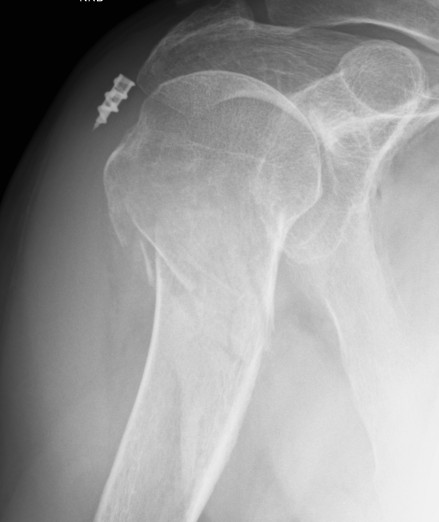Surgical Options
1. Open antero-lateral approach
Large / Massive Cuff Tear
2. Deltopectoral approach
Large Subscapularis tear
3. Arthroscopic Assisted Mini-open
Indication
- Small / Moderate Cuff Tear < 3cm
- no retraction
Technique
- arthroscopic SAD
- assess tear with scope
- repair RC through deltoid split
Advantage
- avoids deltoid detachment from acromion
- small scar
- still have to immobilise shoulder for 6/52 to protect cuff tear
4. Arthroscopic repair
SAD
Gartsman et al J Should Elbow surgery 2004
- prospective randomised trial
- no large tears, no previous surgery
- all arthroscopic single tendon repair, all type 2 acromion
- no difference in functional outcome whether had SAD or not
Advantages of performing SAD
- long history of successful use
- minimal complications
- aids visualisation in open and arthroscopic repairs
Biceps / SLAP
Franchesci et al Am J Sports Med 2008
- RCT 63 patients with RC tear and SLAP 2
- repair v tenotomy
- significantly better shoulder scores and ROM in tenotomy group
Morphology
4 types of cuff tears
1. Cresent shaped
- simple lateral repair
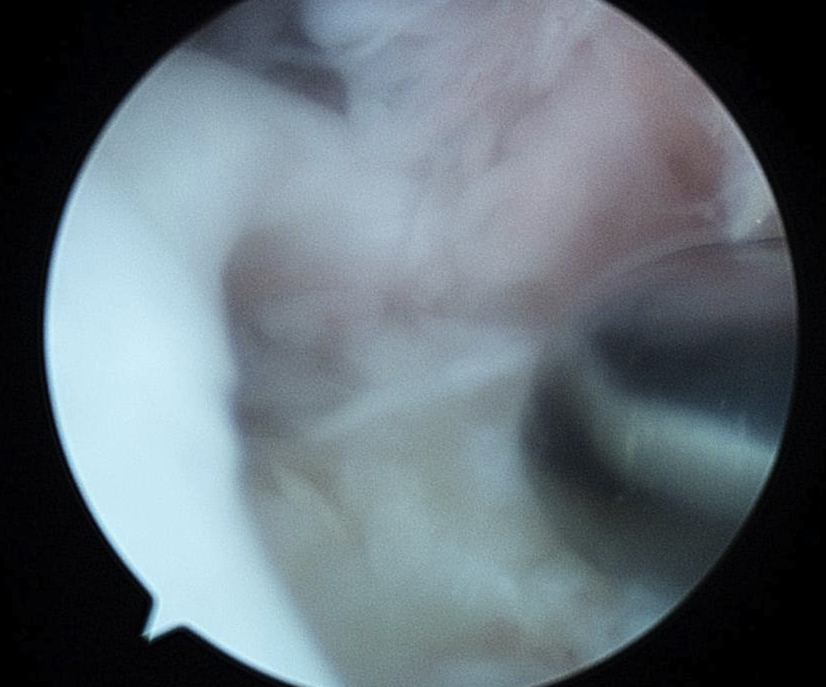
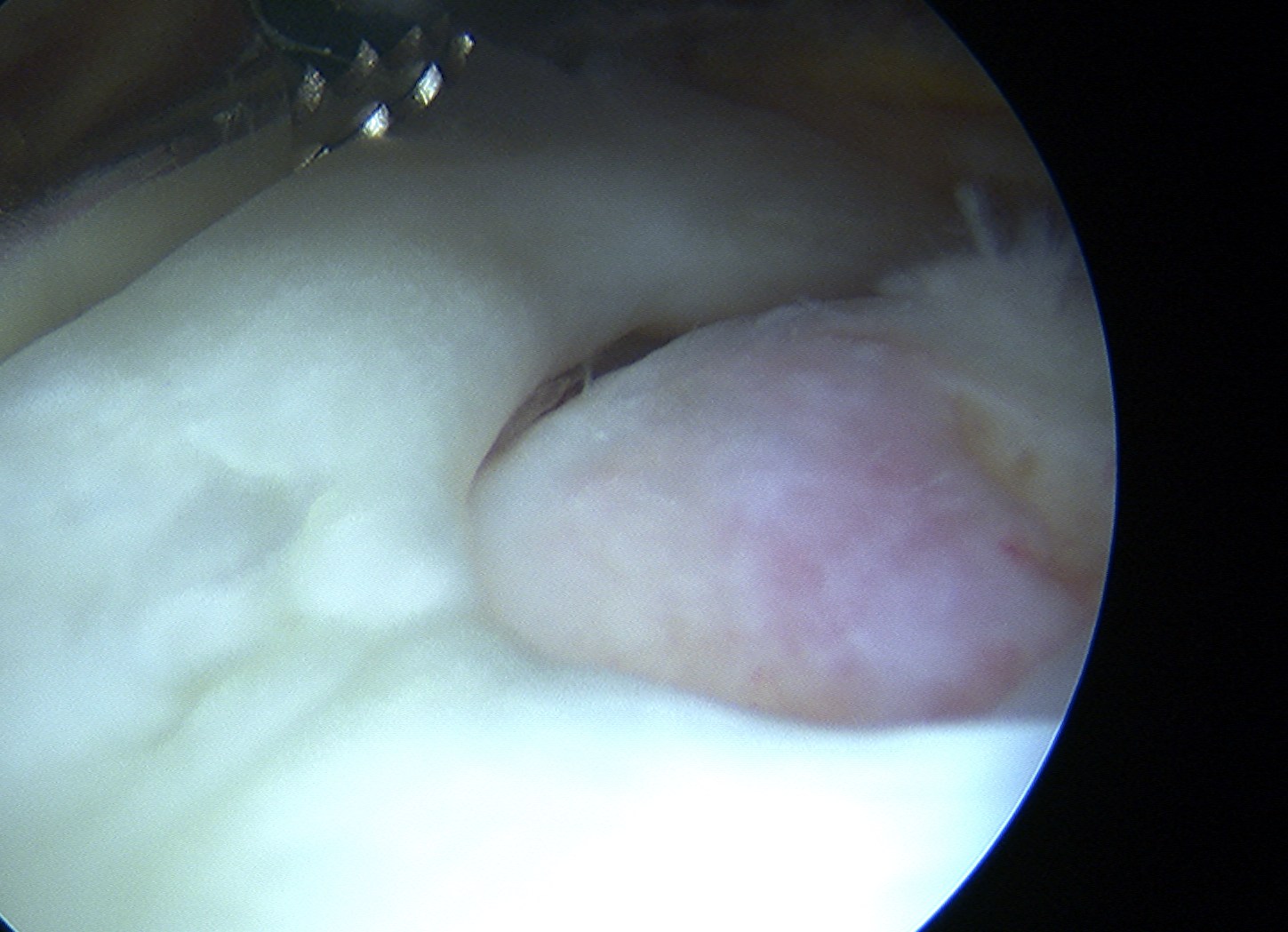
2. U shaped
- larger
- need margin convergence, then lateral repair
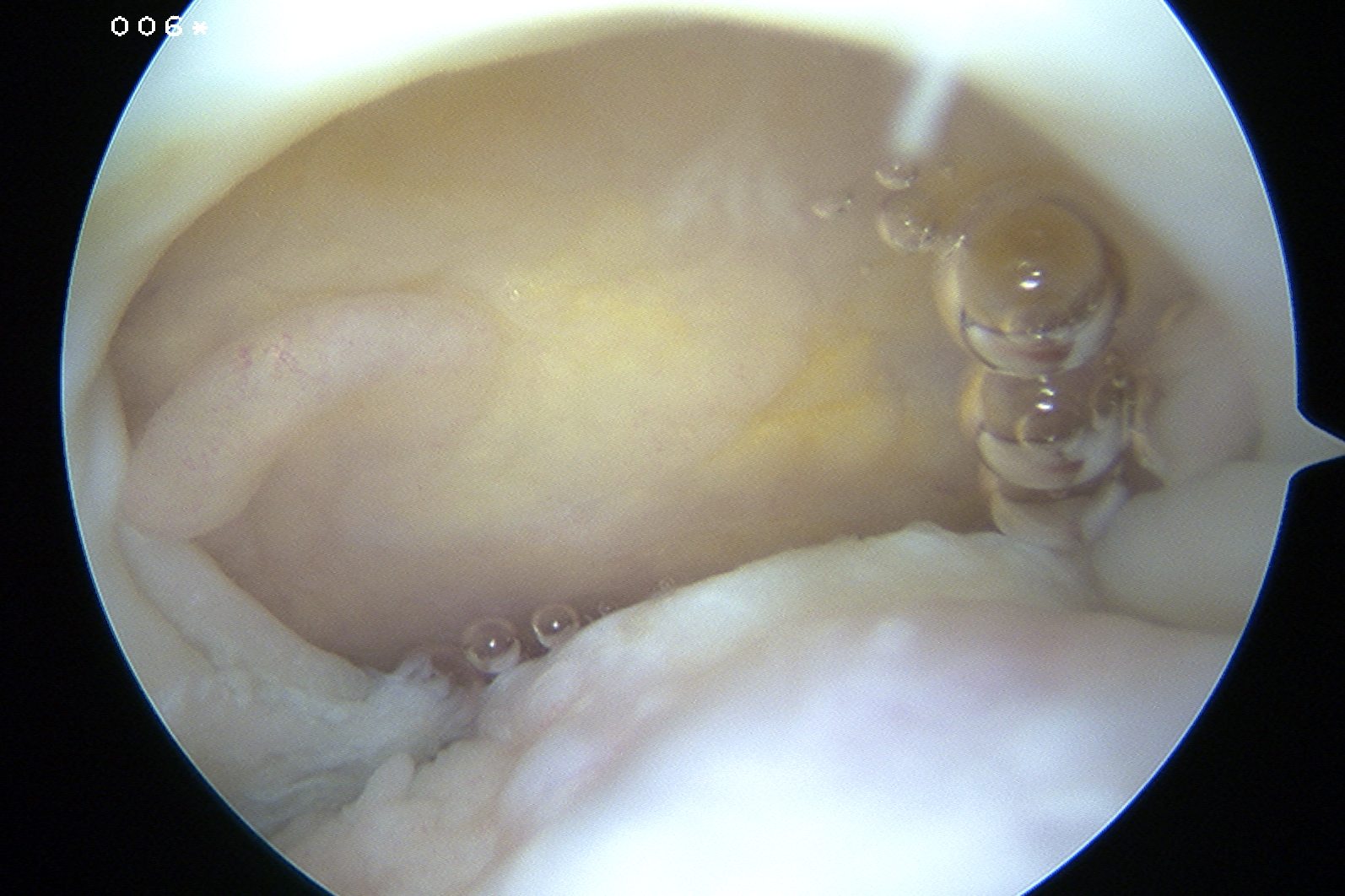
3. L shaped
Tear of Suprapinatous laterally
- transverse extension
- at rotator interval anteriorly
- or in supraspinatous posteriorly
4. Massive
Rotator cuff retracted to glenoid
1. Open Rotator Cuff Repair
Indications
- large to massive tear
Concept
- deltoid taken off anterior acromion
- acromioplasty with saw
- bursectomy for exposure
- margin convergence if large tear
- suture anchor repair laterally
- single / double row / suture bridge configuration
- deltoid repaired via intra-osseous sutures
Advantage
- reliable
- good results in terms of tendon healing and outcome
Disadvantage
- longer, more painful recovery
- must protect deltoid repair 6/52
- no early mobilisation
- risk of deltoid dehiscence
- miss any intra-articular pathology if don't perform arthroscopy
- ? management of biceps
Technique
Position
- lazy beachchair
Incision
- Neer type
- over ACJ and anterior clavicle
- angle down between anterior and middle deltoid
Approach
- down to deltoid
- identify raphae between anterior and middle deltoid
- carefully open interval
- must no damage any underlying cuff / LHB
- must not extend incision > 5 cm from acromion or risk damaging anterior AXN
- take deltoid off anterior acromion with diathermy
- control acromial branch of the thoracoacromial artery
Acromioplasty
- Neer style 2 saw cuts
- take anterior acromion in line with anterior clavicle
- second cut takes angle of acromion superior to inferior
- make more generous in large to massive tear for exposure
Bursectomy
Tear completely identified
- Edges trimmed
- Digital stripping of upper & lower surfaces from scar
- Mornihans retractors / Mason-Allen suture to grasp tendon
- assess tear geometry
- assess ability to repair to footprint
Techiques to mobiise retracted SS tendon
1. Release CHL (runs from coracoid to free edge SS / into rotator interval)
2. Release RC interval
3. Mobilise above and below supraspinatous tendon
4. Release above glenoid 1.5cm (beware suprascapular nerve)
5. Interval slide - divide between SS and IS posteriorly, rotator interval anteriorly
6. Medialise insertion - take away some of articular cartilage
7. Repair SSC and IS for restoration of force couplet (if SS irrepairable)
Repair Options
1. Direct suture of tendon
- margin convergence
2. Suture of tendon to bone
A. Anchors
- roughen footprint
- 1 or 2 row technique
- medial row downwards pressure
- lateral row pulls across
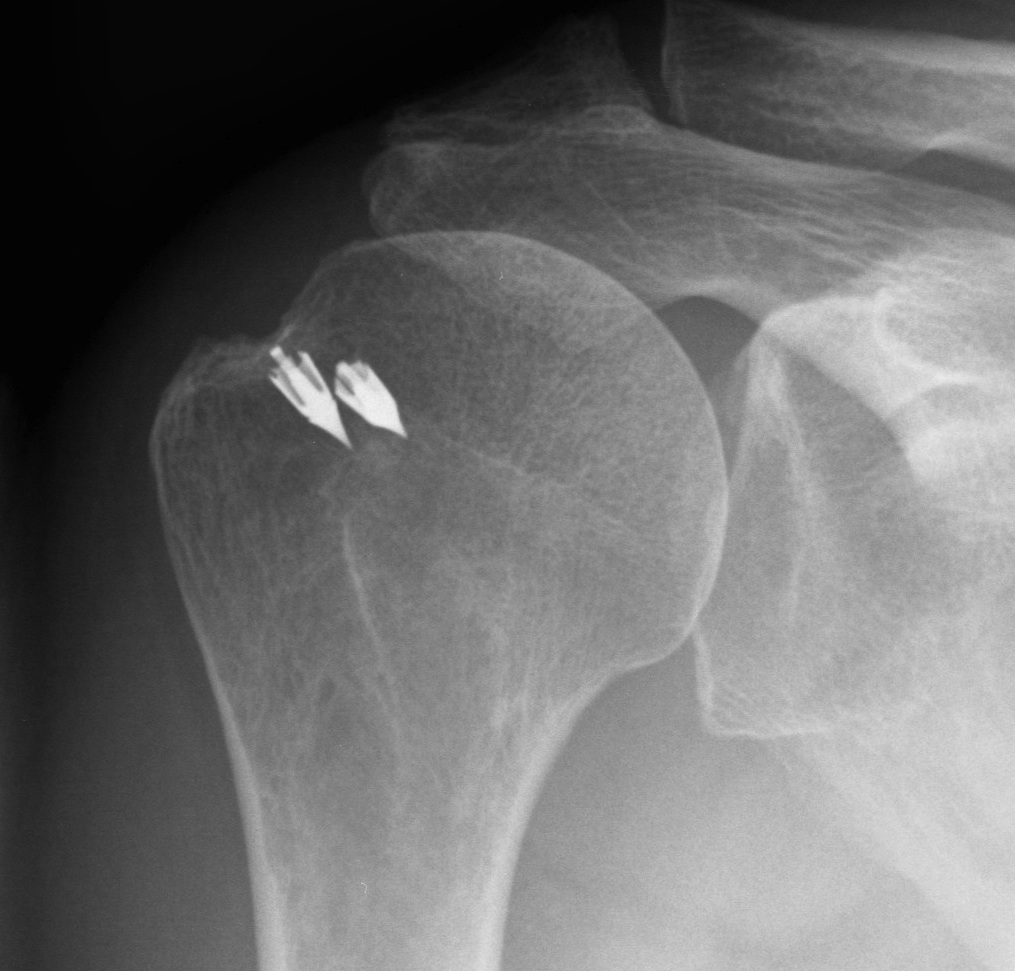
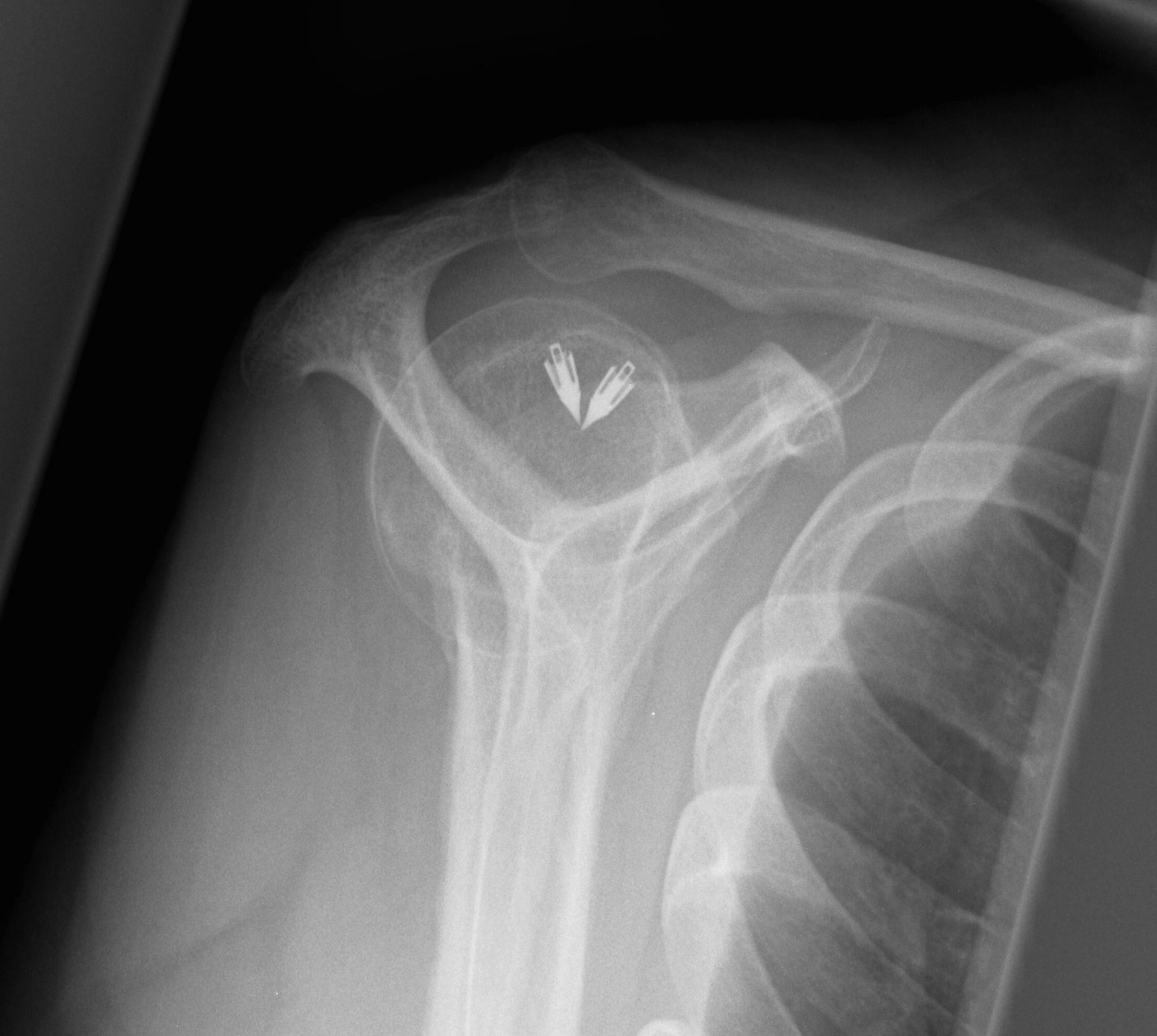
B. Trough made in bone
- in anatomical neck near GT
- drill-holes made in trough
- tendon sutured through drill-holes / anchors
C. Intraosseous sutures
- suture passer
- tie over small poly plate (arthrex)
3. Mc Laughlin Technique
- if direct suturing unfeasible
- Y closure performed
- tendon defect made triangular with base at insertion
- apex closed as far as possible with shoelace suture
- unclosed tendon edges sutured to cancellous bone of humeral head
Repair done with arm by side
- may be abduct to aid repair
- should be able to be brought by side at completion
- may need abduction pillow
Closure
- intra-osseous deltoid repair
- no 1 ethibond
- careful attention to this part of surgery
Large - Massive Tear
Generous acromioplasty
Excise distal clavicle for better exposure
Techniques as above
Post op
Must protect deltoid repair
- passive ROM 6/52, hand and elbow exercises, sling
- active ROM begin at 6/52
- strengthening at 3/12
- return to sport after 6/12
Poor prognosis
- large-massive tear
- fatty infiltration / atrophy
- older patient (>60)
- poor subacromial decompression
- excessive acromial resection
- damage to Deltoid
- improper rehabilitation
- smokers & DM
2. Arthroscopic SAD + Mini open Rotator Cuff Repair
Concept
- perform subacromial decompression with arthroscope
- no need to detach deltoid
- made 2 - 5 cm deltoid split directly over tear and repair
Indication
- moderate size tear up to 3 cm
Technique
- posterior portal for camera
- lateral portal for SAD
- localise tear with needle
- make mini open incision over tear
- repair as above
Results
Open v Mini-open
Mohtadi et al Am J Sports Med 2008
- RCT open v mini-open
- massive tears excluded
- mini open better shoulder scores at 3/12
- no difference at 1 or 2 years
Tear integrity
Papadopolous et al J Should Elbow Surg 2011
- ultrasound evaluation of tears at 3 years in 37 mini-open patients
- 48% intact in patients who tended to have smaller original tears and be 15 years younger
- most patients had satisfactory outcome
Complications
Rerupture
- up to 50%
- increased in older patients with larger tears
Cuff Arthropathy
- 5% massive rotator cuff tears
- associated with rerupture
- high riding humeral head
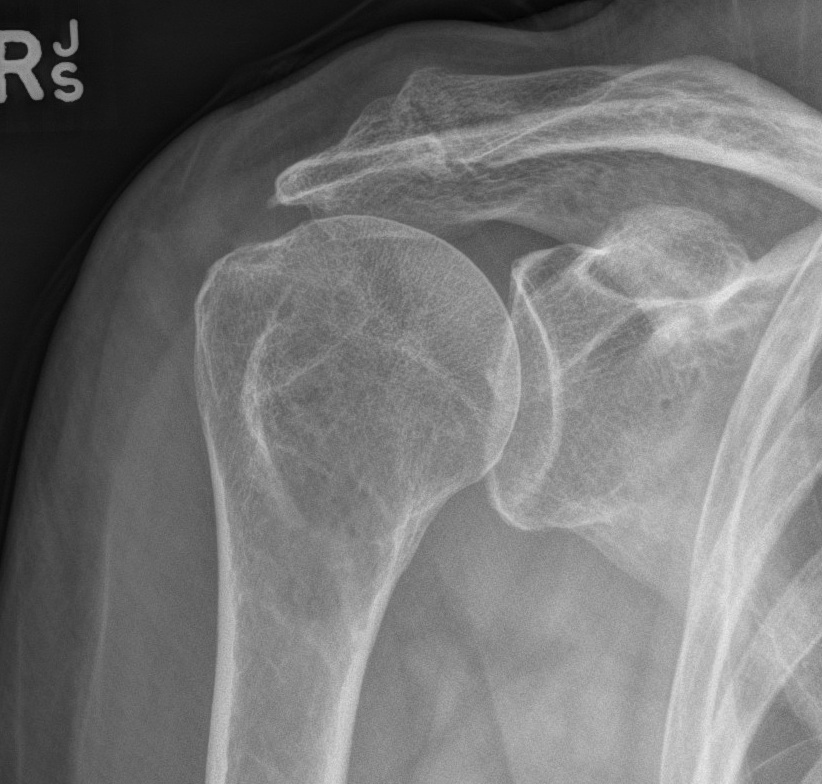
Infection
Pain
- inadequate acromioplasty
- rerupture
- wrong diagnosis (frozen shoulder / cervical radiculopathy)
Difficulty using arm above shoulder height
- rupture of repair of FT tear
- deltoid detachment or denervation
- biceps tendon rupture
Stiffness
Deltoid avulsion
Axillary nerve injury
Acromial fracture
RC Tear / Anchor Pullout
